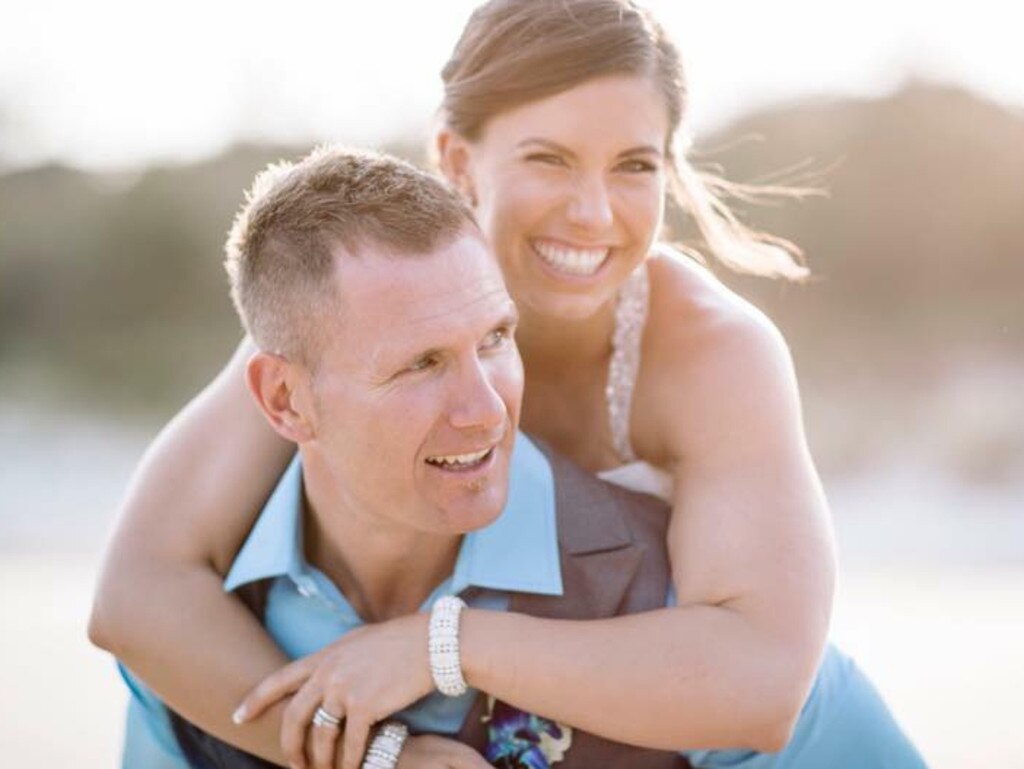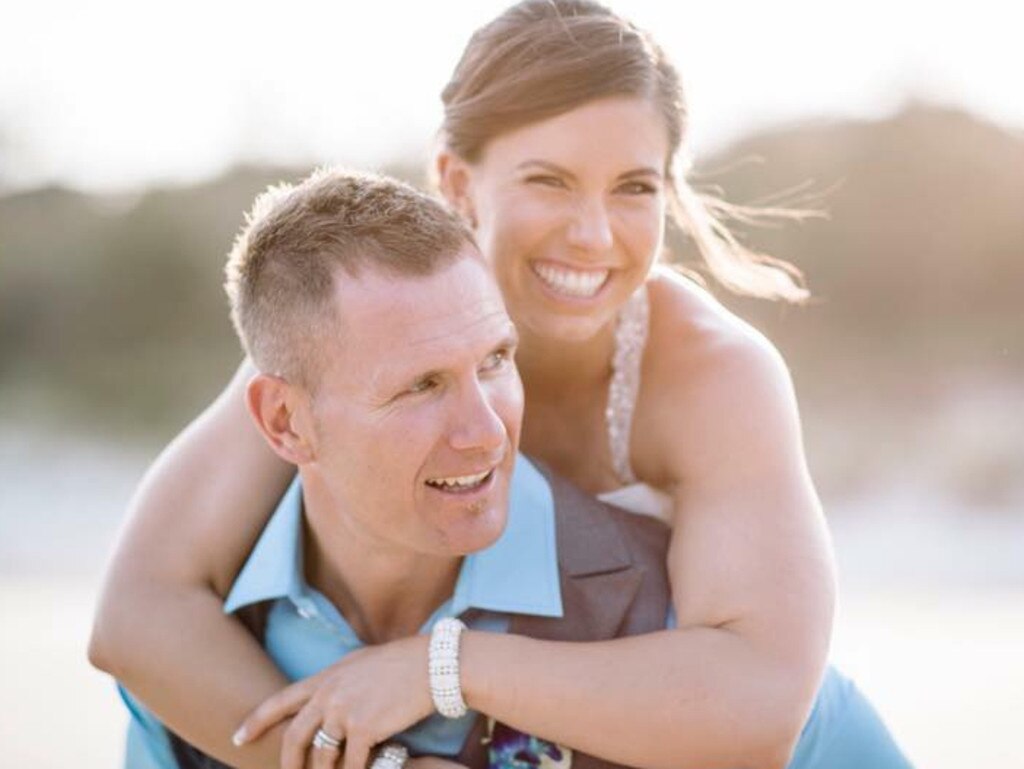Bianca’s story: when husbands threaten murder
With one Australian woman a week murdered by her partner, Bianca needs to tell her story, and she needs you to listen.

“If I die at his hands, can you put my name to my story?”
“Bianca”, a senior frontline public servant, has spent 10 years being subjected to a campaign of domestic abuse and coercive control waged by her now former husband, a fellow professional.
Bianca cannot identify herself, even if she wanted to, because she’s been involved in a Family Court parenting case and multiple court proceedings for domestic violence protection orders. Both of these legal systems gag participants.
But she wants to tell her story. And with one Australian woman a week killed by her partner, she needs to tell her story, and she needs you to listen.
She needs you to understand that coercive control, a little-known but dangerous pattern of intimidation, surveillance, emotional violence and isolation, is a “red flag” for murder.
Yet she wants to warn policymakers to resist any knee-jerk reaction to criminalise coercive control in the wake of the murders of Hannah Clarke and her three children, especially if that change is not coupled with family law reform, extra behavioural change programs for perpetrators, specialised training for police and more money for women’s legal services.
And if her former husband succeeds in murdering her, as he has repeatedly threatened, she doesn’t want to have been silent.
Bianca and Paul met and married in her home town. She was attracted to his gentle nature, his sense of humour and his intelligence.
Soon after their wedding, the coercive control began. Paul wrongly accused Bianca of having affairs. He insisted they move to another town where Bianca knew no one but him, hours away from her family and friends. She was isolated and totally dependent on him.
Paul started stockpiling guns on their sprawling rural property. He installed video cameras, tracking movement.
Then the physical violence started. Paul would push Bianca into furniture. She was petite, he was tall and well-built.
Paul would throw her around — in her words, “like I was a ragdoll”. Bianca learned the only safe place was the hospital, where she would tell nurses she was suicidal to ensure she was admitted. One nurse noticed bruises on her arms, and — emboldened by Valium — Bianca told her about her violent marriage. She begged the nurse not to tell anyone, fearing Paul would kill her if she challenged his control and tried to leave.
Newborn child
After the birth of their son, Paul suddenly quit his job, jealous of the attention Bianca was giving their newborn. She became the sole-breadwinner, chief childminder and the only person doing the housework, even after one more child arrived. She was still mowing the lawn at eight-months pregnant while he played video games.
Often, when they had an argument, Paul would threaten to kill himself in front of their two children. One night, after their children were asleep in their beds, Bianca told him their relationship wasn’t working. Paul was irate, and insisted she could never leave him.
He pinned her to their loungeroom wall. He put his hands around her throat and squeezed, until Bianca was close to losing consciousness. Looming over her, he said: “I could kill you right now if I wanted to. You’re only alive because I don’t want to … yet.”
Bianca says now: “That little three-letter word told me I needed to get the f..k out of there.”
She talked him down. He fell asleep, hand gripping her wrist, and centimetre by centimetre she wriggled free.
Bianca fled from the house in her pyjamas, sprinting to her neighbour’s home in the pre-dawn light, and called the police. Paul was arrested, had a DVO taken out by police, and eventually was convicted of common assault (after a more serious charge was plea-bargained away by prosecutors). He was sentenced to a good behaviour bond and was free to go.
Nightmare continues
Years after Bianca fled, with a DVO in place, tens of thousands of dollars she didn’t have spent on lawyers’ fees, and a shared parenting order through the Family Court, Bianca is still subject to coercive control by Paul.
He follows her in his car, recording videos on his phone.
He video-calls their children and asks them to show him around the house, often urging them to “show me what Mum’s doing”. He convinces their children to covertly switch on their phones’ voice recorder to tape private conversations in the house. Paul has made several vague, but pointed, references to murder-suicide on social media.
Bianca takes her life into her hands multiple times a month when she collects her children after they spend the weekend with Paul. She carries a duress alarm, and has a dashcam in her car. She wants her two children to have a relationship with their father, whom they love, but sometimes she just wants to feel safe: “All mothers have to make sacrifices for their children. But will I end up having to sacrifice my life?”
Hannah’s murder
After the murder of Hannah Clarke and her three children by her estranged husband, Rowan Baxter, Liberal National Party leader Deb Frecklington announced she would criminalise coercive control if the opposition wins the Queensland election in October. Currently, nowhere in Australia has such a criminal offence, but Scotland, England and Wales have introduced such laws. Tasmania has offences of emotional abuse or intimidation, and economic abuse.
Criminalisation of coercive control is a reform the Women’s Legal Service Queensland has suggested be seriously investigated as part of a broad-based review of the criminal justice system.
WLSQ chief executive Angela Lynch is blunt: coercive control is “a red flag for murder”. “That kind of highly controlling behaviour that was engaged by Rowan Baxter, the tracking, monitoring, stalking, and sexual assault as well, they are all hallmarks of an extremely dangerous person and perpetrator,” Lynch says.
New offence
The benefit of a coercive control criminal offence is that it would ensure police looked at an offender’s pattern of behaviour, rather than just an individual incident of violence.
Deakin Law School doctoral candidate Paul McGorrery said the reform would demonstrate the state’s “denunciation of the behaviour” and “legitimise victims’ perception of what they’re going through”.
Lynch acknowledges there are valid concerns about such a reform because it could allow canny offenders to further weaponise the legal system against vulnerable victims.
“At the moment, we have about 20 per cent of DV orders at our service where the police basically misidentify the correct perpetrator,” Lynch says.
“Women have been raped or strangled, and they’ve fought him off. They call the police, he has scratch wounds, and he’ll be able to get a DVO against her, because he has visible wounds and she doesn’t.”
Lynch says the offence of strangulation needs to be updated, as does the definition of stalking — the latter has not kept pace with recent technological advances.
And the system of DVOs should be beefed up, with police trained and resourced to closely monitor offenders classified as high risk, such as Baxter.
Queensland Premier Annastacia Palaszczuk — who convened a special domestic violence council in Brisbane on Friday and will hold a summit in March — says she is keeping an open mind to any such reforms, but will not make any decision until after the funerals of Clarke and her children.
NSW, Western Australia and the Northern Territory governments all told The Australian this week that they could introduce a new criminal offence of coercive control.
Legal warnings
Domestic violence academics and researchers such as the University of Queensland’s Heather Douglas and the University of Technology Sydney’s Jane Wangmann have cautioned against such a move.
Douglas questions whether resources would be better spent ensuring police understand the practice of coercive control, and ensuring officers use existing criminal offences properly.
She says it’s natural to try to find the “one thing” that will stop the scourge of domestic violence, but it doesn’t exist.
“There’s a whole lot of things that have to work better. It starts with childhood, training kids about safe relationships, talking about toxic masculinity.
“And then it branches out, to better public housing for women escaping violence, better arrangements for social security,” Douglas says.
She says the offence of torture in the Queensland Criminal Code has been used in serious cases of coercive controlling behaviour, but it’s a high bar and difficult to prove — as a criminal offence of coercive control would likely be.
Victim’s experience
Bianca also urges caution in relation to criminalising coercive control.
She’s worried that if politicians go down that path, they’ll be tempted to think they’ve solved the problem of domestic violence and neglect to implement a more thorough, and effective, package of reforms.
She says if we want to have a direct and immediate impact on the safety of women and children, family law reform would be more effective. Bianca says shared custody should no longer be the default presumption, particularly where there is evidence that one parent is abusive.
And she says more resources should go to programs to help perpetrators change their behaviour, and to women’s legal services — which she credits for saving her life.
She wants more specific education and training for police, so all officers can be like the female cop who helped Bianca after she was strangled.
A woman who gently, over months, supported her to lay criminal charges against Paul, and backed her the entire time.
Above all else, Bianca wants policymakers to listen to survivors of domestic abuse and coercive control.
“Victoria has a Victim Survivor Advisory Council, and I urge all other states to consider implementing something similar, to give voice to those who have a lived experience of domestic abuse,” she says.
“After all, we’re the people who stand to lose everything from getting this wrong.”







